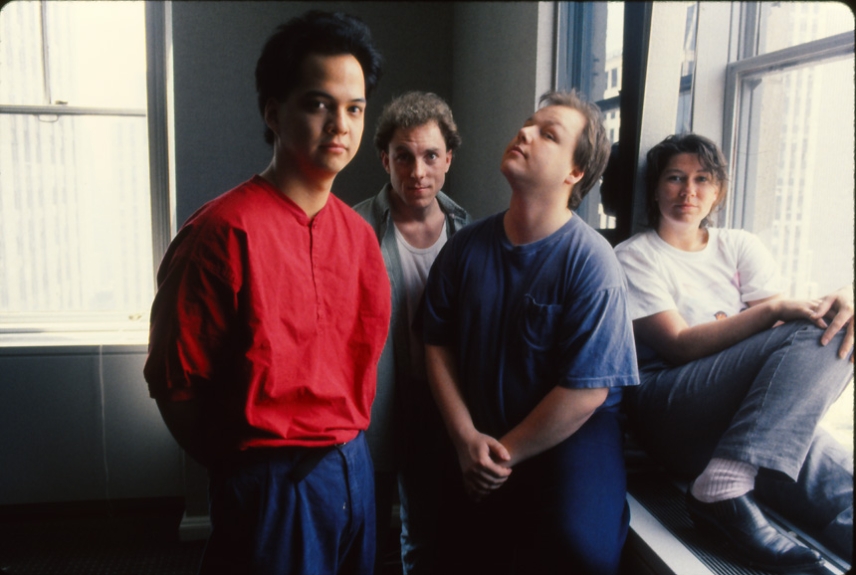Pixies were Black Francis, Joey Santiago, David Lovering and Kim Deal.
“You go through this whole learning thing when you get to be our age, and you learn that the extremes are really good. Like when Big Black comes on with all that guitar noise, that’s really good. Or when Patsy Cline sings, and she’s, like, dripping with tears, that’s really good too. Baaad disco! You know, like the Village People: That’s great because it’s just so campy gross! You learn to appreciate all kinds of music, especially if it’s extreme and the musicians really mean it.”
Kim Deal, Pixies, 1989
In 1988, Steve Albini recorded the Pixies’ Surfer Rosa album in a week and charged them only $1500. And yet he later called the now classic album “a patchwork pinch loaf from a band who at their top-dollar best are blandly entertaining college rock.” A couple of years later, when they were on a major American label (Elektra) and flush with dough, he charged them $4000 to record one song.
Michael Azerrad, Our Band Could be Your Life, 2001
In 1987, back when alt-rock was called "college rock," the Pixies loomed large, like a bizarre crossbreeding of pop sensibilities, art-rock conceptualism and nasty guitar riffs. The elements of their sound — songwriter Black Francis' shrieking vocals, bassist Kim Deal's predatory bass lines, guitarist Joey Santiago's piercing leads and drummer David Lovering's unforgiving beats — were discernible, but they added up to something unprecedented and inexplicable, so fierce, and so weird. Their influence was far-reaching and disparate: Fans have included everyone from Kurt Cobain, who considered himself a Pixies rip-off artist, to Papa Roach, who cover the band's "Gouge Away."
Pat Blashill, Rolling Stone, 2002
